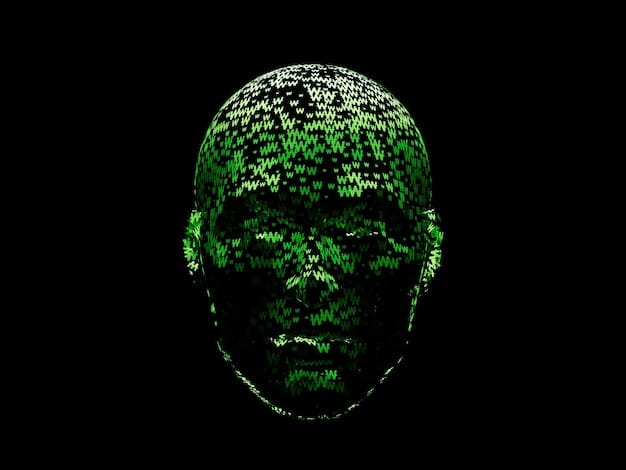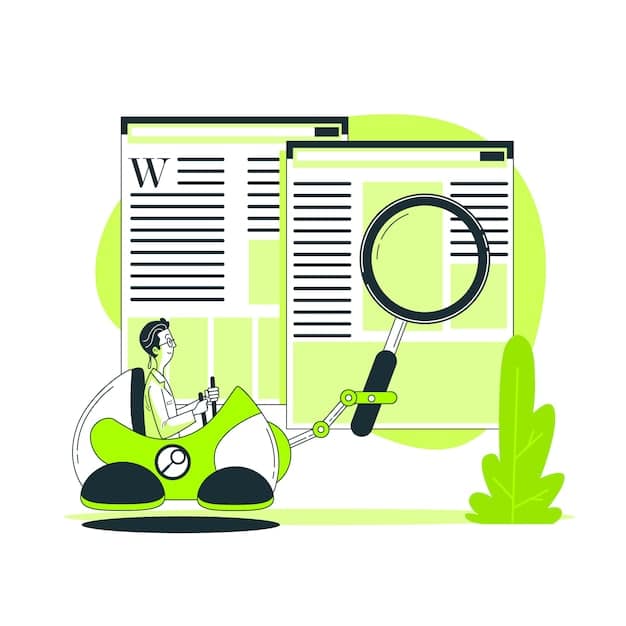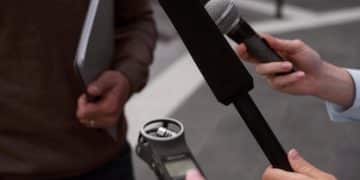Political Misinformation: A Guide to Spotting Fake News and Protecting Democracy

Political misinformation, often spread through fake news, can significantly undermine democratic processes by influencing public opinion with false or misleading information, necessitating critical evaluation skills and awareness to protect the integrity of political discourse.
In today’s digital age, the relentless spread of political misinformation poses a significant threat to the very foundations of democracy. It’s crucial to discern fact from fiction and safeguard the integrity of our political processes.
Understanding the Landscape of Political Misinformation
Political misinformation encompasses a wide range of deceptive content, from outright fabricated stories to subtly distorted facts. Recognizing the different forms of misinformation is the first step in combating its spread.
Types of Political Misinformation
Political misinformation can manifest in various forms, each with its own unique characteristics and potential impact. Understanding these types helps in identifying and addressing them effectively.
- Fake News: Entirely fabricated stories presented as genuine news reports, often designed to manipulate public opinion.
- Disinformation: Deliberately false or misleading information spread with the intent to deceive.
- Misinformation: Inaccurate information spread unintentionally, often due to lack of verification or fact-checking.
- Malinformation: Information based on reality, but used to inflict harm, such as revealing private information or spreading rumors.
These different forms of misinformation play distinct roles in shaping public perception and influencing political discourse. Being aware of these nuances can empower individuals to critically evaluate information and avoid falling prey to deceptive narratives.

In conclusion, political misinformation can seriously erode trust in democratic institutions and processes. Understanding the various forms of political misinformation is fundamental in mitigating its harmful effects.
The Role of Social Media in Spreading Fake News
Social media platforms have become powerful tools for disseminating information, both accurate and misleading. Understanding how fake news spreads on these platforms is crucial for mitigating its impact.
Algorithms and Echo Chambers
Social media algorithms prioritize engagement, which can inadvertently amplify the spread of misinformation. Users are often presented with content that aligns with their existing beliefs, creating echo chambers where false information can thrive.
- Filter Bubbles: Algorithms curate content based on user preferences, limiting exposure to diverse perspectives.
- Engagement Metrics: Content that generates high levels of engagement, regardless of its accuracy, is often prioritized.
- Viral Spread: False information can spread rapidly through shares, likes, and comments, reaching a wide audience in a short amount of time.
These dynamics contribute to the formation of echo chambers, where individuals are primarily exposed to information that confirms their existing beliefs, reinforcing biases and making it more difficult to discern truth from falsehood.
In summary, social media’s role in spreading fake news is significant due to algorithmic biases and the formation of echo chambers. Addressing these issues is crucial for promoting a more informed and balanced online environment.
Identifying the Red Flags of Political Misinformation
Spotting fake news requires a critical eye and a willingness to question the information presented. Several red flags can indicate that a piece of content may be misleading or outright false.

Common Red Flags
Being aware of these red flags can help individuals identify potentially misleading content and take steps to verify its accuracy before sharing it with others.
- Sensational Headlines: Exaggerated or emotionally charged headlines designed to grab attention.
- Lack of Sources: Absence of credible sources to support claims made in the article.
- Poor Grammar and Spelling: Frequent errors in grammar, spelling, and punctuation.
- Website Credibility: Questionable or unfamiliar website domains and design.
By recognizing these red flags, individuals can become more discerning consumers of information and avoid falling prey to fake news and misinformation.
In conclusion, identifying red flags is essential for discerning political misinformation. By cultivating a critical mindset, individuals can protect themselves and others from deceptive narratives.
Tools and Techniques for Fact-Checking
Fact-checking is a crucial skill in the fight against political misinformation. Several tools and techniques can help individuals verify the accuracy of information they encounter online.
Effective Fact-Checking Strategies
Using a combination of these tools and techniques can help individuals develop a more comprehensive and accurate understanding of the issues at hand and avoid being misled by false or biased information.
Always cross-reference information from multiple sources. Reputable news organizations typically adhere to strict journalistic standards and provide balanced coverage of events. Use Snopes, PolitiFact, and FactCheck.org.
In short, fact-checking tools and techniques are invaluable in combating political misinformation. By utilizing these resources and adopting a critical approach, individuals can protect themselves and others from falling prey to false narratives.
The Psychological Factors Behind Believing Fake News
Understanding the psychological factors that make people susceptible to believing fake news is crucial in developing effective strategies to combat misinformation.
Cognitive Biases and Confirmation Bias
Cognitive biases can significantly influence how individuals perceive and interpret information. Confirmation bias, in particular, plays a key role in the spread of fake news, as people tend to seek out and accept information that confirms their existing beliefs.
The availability heuristic leads people to overestimate the importance of information that is easily accessible or memorable. The Dunning-Kruger effect causes individuals with limited knowledge or expertise to overestimate their abilities.
Cognitive dissonance refers to the mental discomfort experienced when holding conflicting beliefs or values. Individuals may reject information that challenges their existing worldview to reduce this discomfort.
In summary, psychological factors such as cognitive biases and emotional reasoning play a significant role in the believability of fake news. Addressing these factors is crucial for promoting critical thinking and combating misinformation effectively.
Protecting Democracy: What You Can Do
Combating political misinformation is a collective effort that requires active participation from individuals, communities, and institutions. By taking proactive steps, you can help protect democracy from the harmful effects of fake news.
Steps to Take
By taking these steps, individuals can contribute to a more informed and resilient democracy, where truth and accuracy prevail over misinformation and deception.
Educate yourself and others about the dangers of political misinformation. Be a critical consumer of information. Talk to family, friends, and colleagues about the importance of media literacy.
Do not share information without verifying its accuracy first. Report fake news and disinformation to social media platforms. Support independent journalism.
| Key Point | Brief Description |
|---|---|
| ⚠️ Recognize Fake News | Learn to identify sensational headlines and unreliable sources. |
| 🔍 Fact-Check Sources | Verify information using reputable fact-checking tools. |
| 🗣️ Educate Others | Share knowledge about misinformation risks and prevention. |
| 🛡️ Protect Democracy | Support journalism and critical thinking to combat misinformation. |
How can I recognize political misinformation?]
Do sensational headlines and the lack of credible sources mark political misinformation?
Can confirmation bias influence the belief in fake news?
What tools can I use to fact-check political news?
How can I help protect democracy from political misinformation?
Identifying red flags like sensational headlines and questionable sources is key.
Confirmation bias can indeed strengthen belief in fake news by accepting congruent information.
Snopes, PolitiFact, and FactCheck.org offer fact-checking.
Educate others about misinformation and support independent journalism
In today’s complex world, comprehending political misinformation is essential. It’s vital to staying engaged, knowledgeable, and responsible citizens. From varied forms to psychological effects, this guide supports identifying and fighting it. With strategies for spotting fake items, fact-checking, and promoting literacy, each is critical to safeguarding democracy against misinformation.





